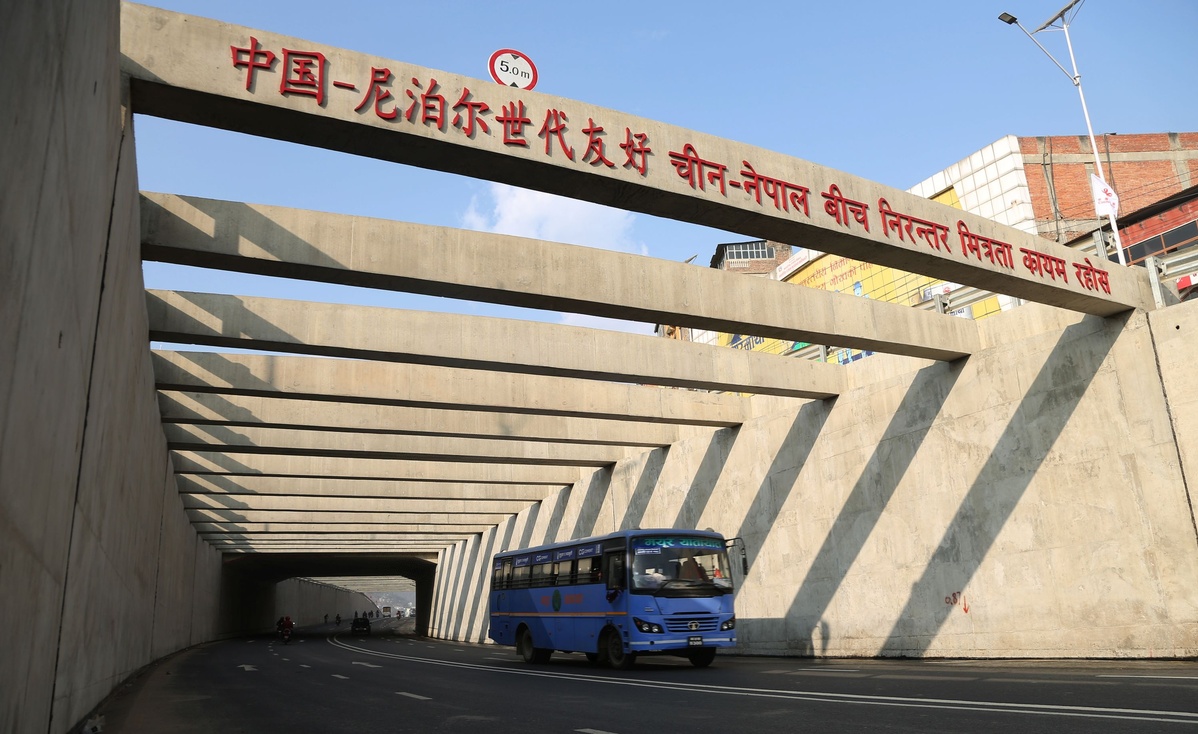Will Nepal be able to act as bridge between China, India?


Nestled between India and China, Nepal is leaving no stone unturned to maintain smooth and friendly relations with its two Asian neighbors. Major credit for such an approach goes to Prime Minister KP Sharma Oli who took charge of the Himalayan country in February 2018. Before taking office, India-Nepal relations were reportedly at their worse following the 2015 economic blockade imposed by New Delhi. However, ties with China remained friendly.
The country, as Nepalese Foreign Minister Pradeep Gyawali puts it, “does not lean more or less on any one side. We don’t try to compare the relationship we have with our two neighbors…We want to benefit from their economic growth and development…We are conveying to China and India that a prosperous and stable Nepal is also in their interest.”
Statistics too suggest that Nepal’s new foreign policy approach is mutually beneficially for all three stakeholders. The country’s market is freely open for both the countries. It has helped Beijing sell goods worth $2.7 billion to Kathmandu in the first 11 months of the fiscal year 2018-19. New Delhi’s exports to the Nepalese capital, meanwhile, stood at $7.8 billion.
When it comes to foreign policy, smaller countries across the world generally share similar challenges. Nepal, which has an estimated population of 29.3 million, faces the double burden of geographical landlocked and a suffering economy. In such a situation, Big Brothers should ideally come forward and help the less-privileged neighbor stand on its own.
The good news is that China and India, on their part, can also be seen reciprocating the goodwill gestures of the Himalayan country more enthusiastically than before. Both countries, for example, are pursuing separate projects to bring railways to Nepal. While the Indian government’s proposed project is set to link Barhni in northern state of Uttar Pradesh to Kathmandu, China has concluded a pre-feasibility study of the proposed $312 million Keyung-Kathmandu railway project that may take about two years. The projects connecting Kathmandu to both countries will not only bring more tourism revenue to Nepal, but will also turn it into a vibrant economic bridge between India and China.
China’s multi-billion-dollar Belt and Road Initiative (BRI), which incorporates plans to construct a trans-Himalayan rail project, includes Nepal. Beijing recently vowed to provide 150 million yuan in assistance to the Nepalese Army over a period of five years for humanitarian and disaster relief equipment. Talks are underway to set up a Nepali-China joint-venture bank to facilitate easier trade between the two countries. At a corporate level, Nepal's Chaudhary Group recently signed a deal worth about $100 million with China's Huawei Technologies to bring 4G phone services to the country.
Similarly, New Delhi’s foreign aid allocation for Kathmandu in the 2019-20 budget stands at 10.5 billion Indian rupees (over $153 million), up nearly 62 percent over the 6.5 billion Indian rupees (over $94 million) earmarked in 2018-19. India is engaged in creating a 900-MW hydroelectric project, Arun-III, in Nepal. New Delhi and Kathmandu are also allies in several road connectivity projects under BIMSTEC (Bay of Bengal Initiative for Multi-Sectoral Technical and Economic Cooperation), SAARC (South Asian Association for Regional Cooperation) and BBIN (Bangladesh, Bhutan, India, Nepal Initiative).
The list of initiatives by India and China to boost the political and economic confidence of Nepal is extensive. Once barely registered on investors’ radars, these intiatives are helping the Himalayan country get out of chaos and upheaval and move towards growth and stability. With capital mainly flowing in from the two big neighboring countries, the Nepalese government is now seeking its inaugural credit rating. Kathmandu hopes to have a credit rating in place by the end of this year, as Moody’s Investors Service has already started accessing the market. Once complete, the chances of Nepal wooing foreign investments from varied sources will increase manifold.
The multi-pronged foreign policy of Oli has the potential to turn the country’s geographical drawbacks into terrestrial advantages. Kathmandu has the potential to act as a bridge connecting the two fastest growing economies in the world, each having more than one billion people. This would also help the region achieve rapid development and economic growth.
A handful of tripartite cooperation agreements between China, India and Nepal may further help in strengthening and maintaining relations.
The author is a New Delhi-based senior journalist and columnist.
The opinions expressed here are those of the writer and do not necessarily represent the views of China Daily and China Daily website.
































